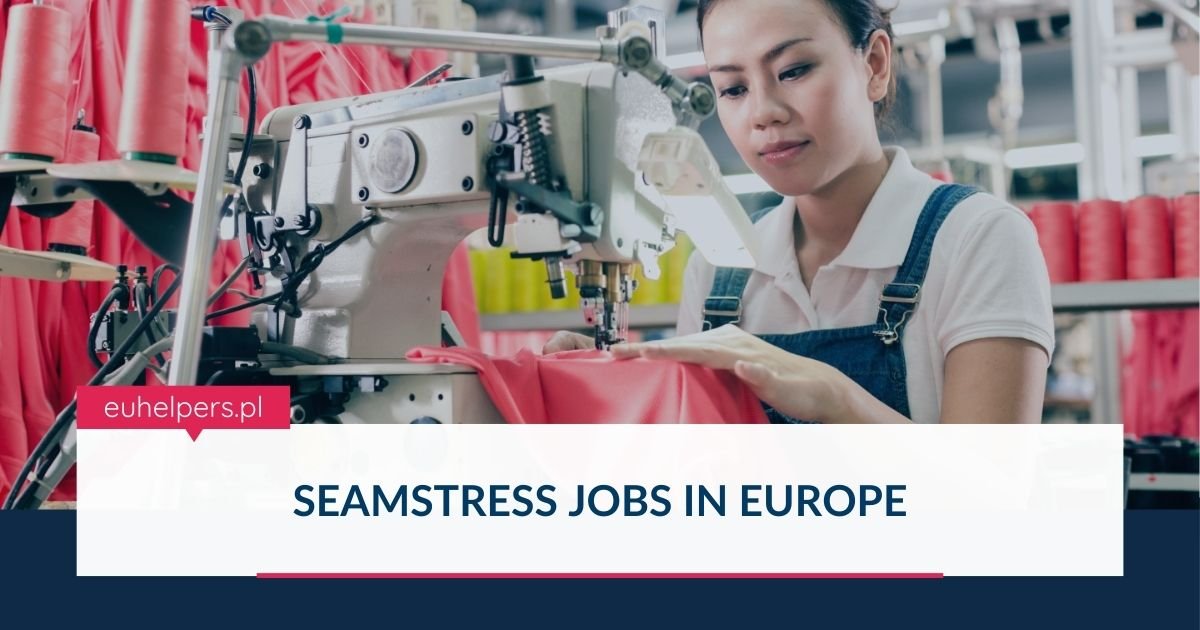Seamstresses play a vital role in Europe’s textile and fashion industries, contributing to both mass garment production and custom tailoring services. Whether employed in large clothing factories, boutique tailoring shops, or working independently from home, seamstresses ensure garments are crafted, altered, and repaired with precision and care.
The Role of a Seamstress
At the heart of a seamstress’s role is the ability to sew, alter, and repair clothing items. This work requires technical skill, attention to detail, and the ability to work with a wide variety of fabrics and materials. Seamstresses may use industrial sewing machines or hand-stitch garments, depending on the job at hand and the setting in which they work.
Core Responsibilities
Seamstresses across Europe typically handle tasks such as:
-
Sewing and Alterations: Performing basic and advanced garment alterations, hemming, and adjustments to fit clients’ needs.
-
Machine Operation: Using different types of sewing machines with efficiency and precision.
-
Material Handling: Working with various fabrics, including cotton, silk, denim, and sometimes leather or other specialty textiles.
-
Quality Control: Ensuring finished products meet specific quality standards and aesthetic expectations.
-
Production Efficiency: Meeting set production targets, particularly in factory settings where output is closely monitored.
-
Safety Compliance: Following workplace safety protocols to maintain a safe sewing environment.
Typical Work Environments
Seamstresses in Europe can be found in a range of professional settings, each offering different experiences and expectations:
-
Clothing Factories: Many seamstresses work in large-scale garment production facilities. These roles often focus on efficiency, speed, and repetitive tasks aligned with manufacturing demands.
-
Custom Tailoring Shops: In these more personalized environments, seamstresses may create custom-fitted garments or offer detailed alteration services for individual clients.
-
Home-Based Businesses: Some seamstresses operate independently from their homes, serving local customers or selling handmade items online. These roles often combine creative freedom with entrepreneurial responsibilities.
Skills and Personal Qualities
Success in a seamstress role depends on a combination of technical and interpersonal skills:
-
Machine Proficiency: A strong command of various sewing machines and tools is fundamental.
-
Attention to Detail: Precision in stitching, cutting, and finishing is key to producing high-quality garments.
-
Hand-Eye Coordination: Essential for accurate sewing and handling of delicate materials.
-
Pattern and Instruction Following: Ability to interpret patterns, measurements, and verbal or written instructions effectively.
-
Customer Communication: In client-facing roles, seamstresses need strong communication skills to understand customer preferences and provide tailored solutions.
Job Outlook for Seamstresses in Europe
While seamstress roles may not receive the same attention as careers in tech or engineering, they remain important in the European job market. According to data from Visual Capitalist, manufacturing roles—including those in textile and clothing production—rank as the fourth most in-demand profession in Europe based on online job listings. Demand is particularly strong in countries with robust fashion industries or manufacturing hubs.
A career as a seamstress in Europe offers a blend of craftsmanship, creativity, and practical skill. Whether in a busy factory or a quiet home studio, seamstresses contribute significantly to the clothing and fashion sectors. With steady demand, especially in tailoring shops and garment factories, the profession remains a viable and rewarding option for those with a passion for sewing and design.

